
Buddha seated on elephants
19th century; Burma
Bronze-covered wood
In Buddhism the elephant symbolises strength of mind, embodying calm majesty and noble gentleness. This Buddha has the hands arranged in ‘touching the earth’ pose.
Presented by Miss Mona Sharp,1908
Reference: 4864
Can be found: Heroes and Villains
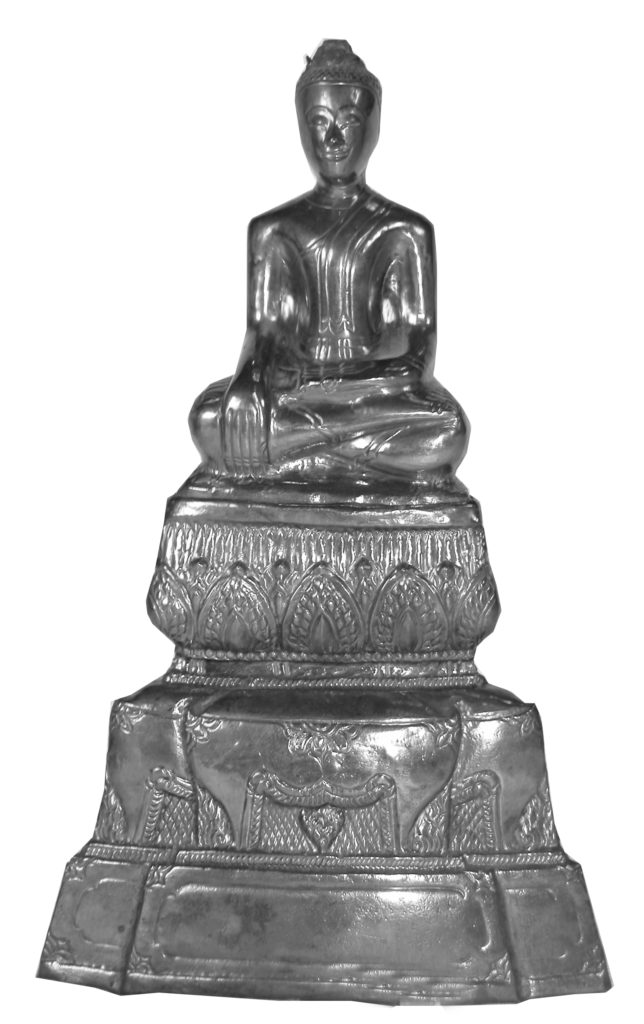
Buddhas
19th century; Thailand
Silver-covered wax, Alabaster
The silver Buddhas are posed in the attitude of meditation. The carved alabaster Buddha, in ‘touching the earth’ pose, has small wings. All are probably from domestic shrines.
Reference: 1756, 126, 1751, 1752
Can be found: Heroes and Villains
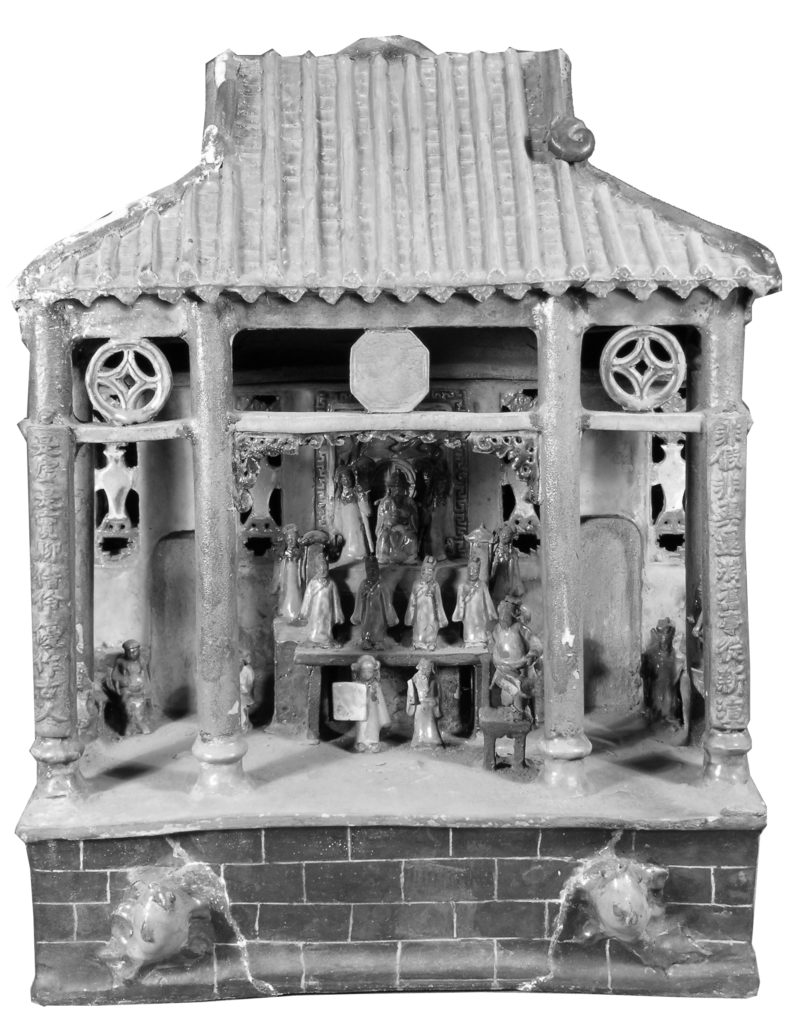
Chinese ceramic temple
19th century; Shiwan in Guangdong province, China
Glazed earthenware
This building is modelled on a Shenist folk temple to nature gods and patron gods. The Chinese text on the pillars can be translated as ‘Fiction or reality, we revisit our ancestors with these figures’.
It was probably made at a workshop called Rui Yuan in Shiwan, Fo Shan City, Guangdong province, a well-known centre for ceramics production of this type. The ceramic used is known as stoneware because of its durability. Shiwan was famous for making architectural ceramics and ceramic figures during the Ming and Qing dynasties (14th to early 20th centuries).
Presented by Mr W Welby, 1874
Reference: 125
Can be found: Heroes and Villains

Chinese pagoda model
19th to 20th century
Ivory
Pagodas are tiered buildings in Asia, originally with a religious function and often sited near temples. The word ‘pagoda’ comes from the Portuguese pagode, meaning ‘temple’.
Reference: 1750A
Can be found: Heroes and Villains
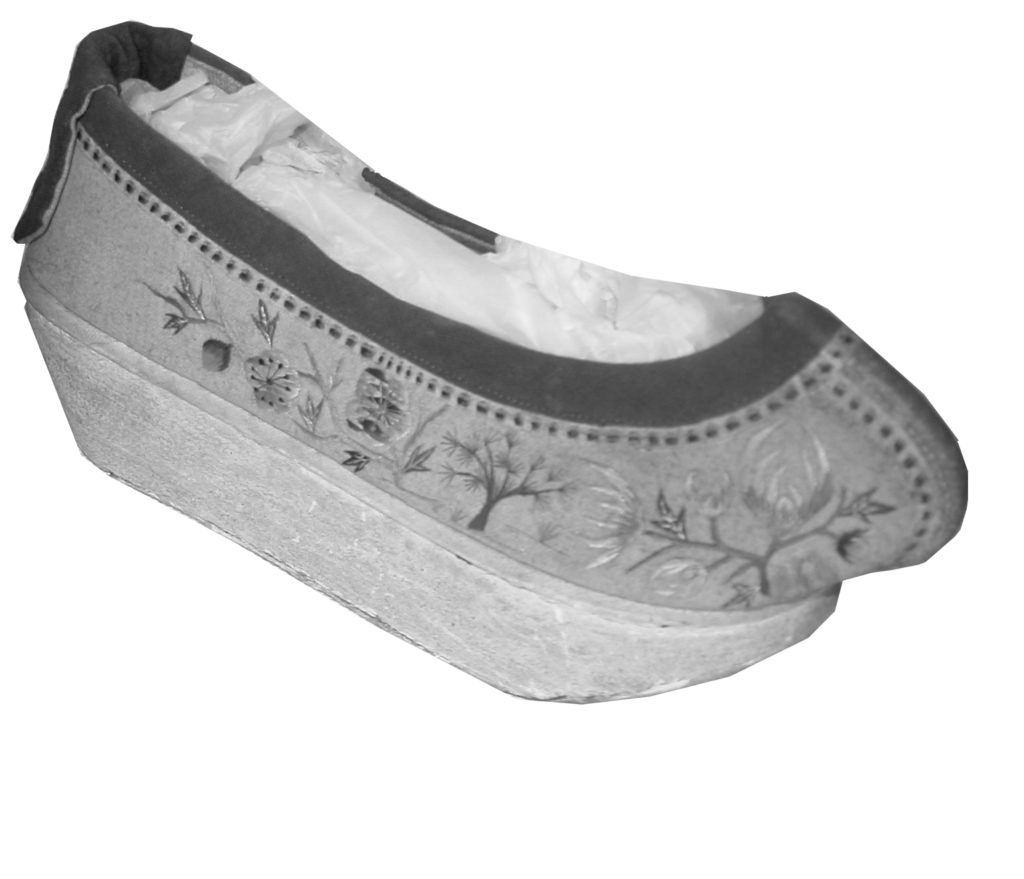
Chinese shoes and purse 19th to 20th century
Silk and wood
The purse has a drawstring moneybag inside the eggshell-like segments, which are held together by tassels. The child’s shoe was given to the museum with a stone inside to keep its shape. Embroidered shoes displayed on the right have a raised sole to keep the embroidered fabric above dust and dirt on the ground.
Child’s shoe conserved with grant-aid from the Kathy Callow Trust, 2012; purse presented by Mrs F. Brewster, 1905
Reference: 4710, (nn), 4757
Can be found: Heroes and Villains
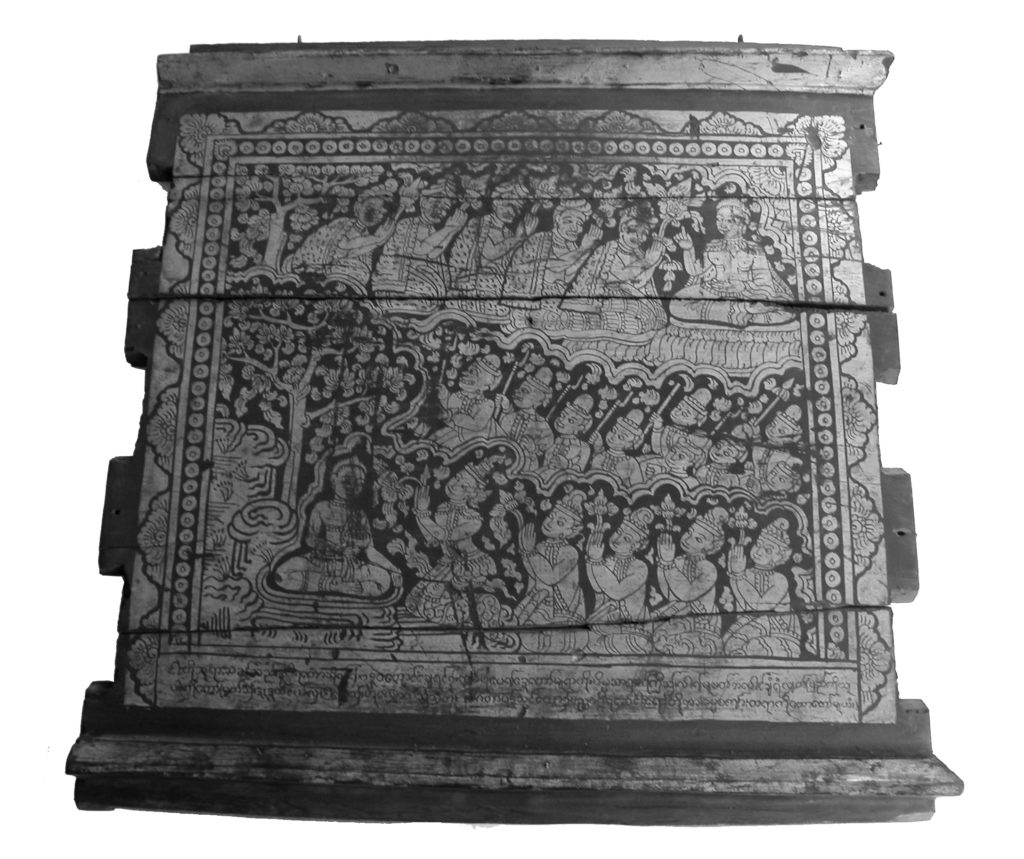
Decoration from a Burmese building
19th century; probably Mandalay, Burma
Wood and gold leaf
19th century; probably Mandalay, Burma Wood and gold leaf
This is one of several souvenirs brought back from Burma after British forces overthrew King Thibaw in 1885. His palace in Mandalay was ransacked and its decorations, including this panel, dismantled.
Presented by Miss Mona Sharp, 1908
Reference: 4867
Can be found: Heroes and Villains
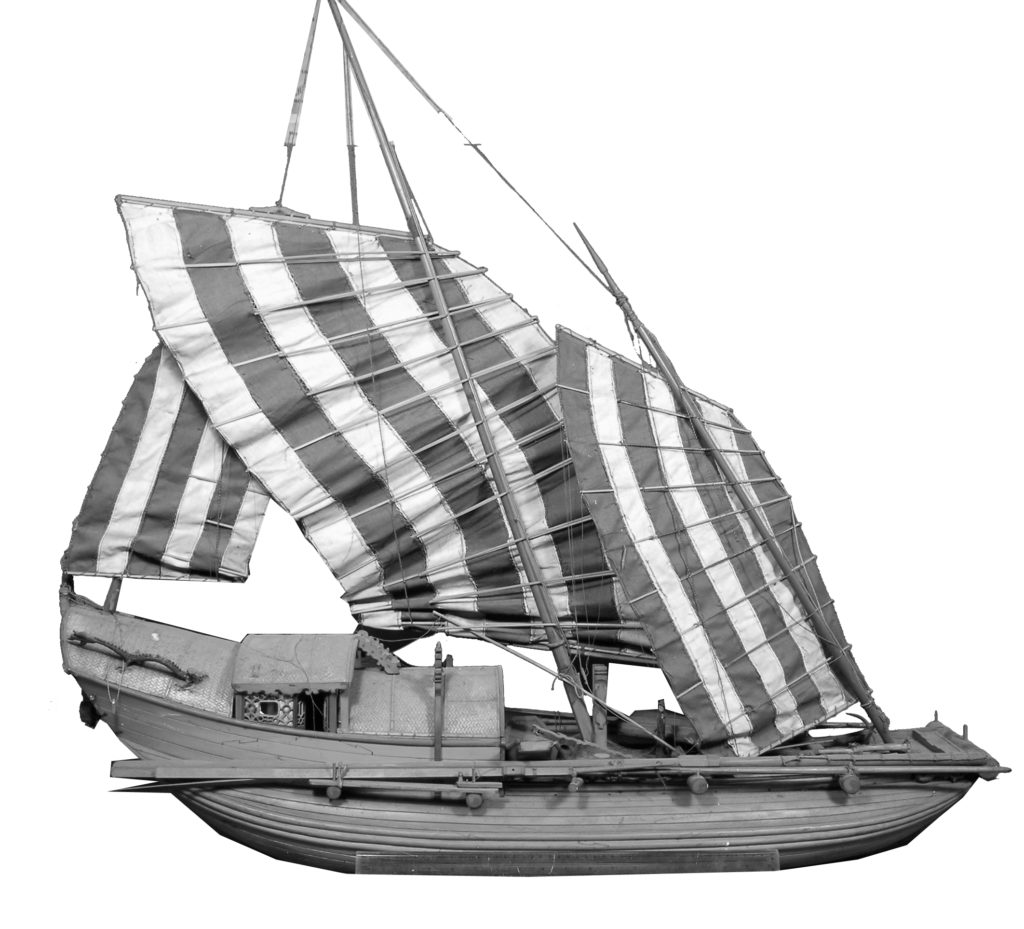
Model of a Chinese junk
19th century; China
Wood and textile
The junk is a traditional South-East Asian boat. Each shipyard builds junks in a slightly different way so there are many varied types. Models like this were made for international exhibition.
Presented by Major C Lefevre, OBE, 1945
Reference: CANCM:nn
Can be found: Heroes and Villains
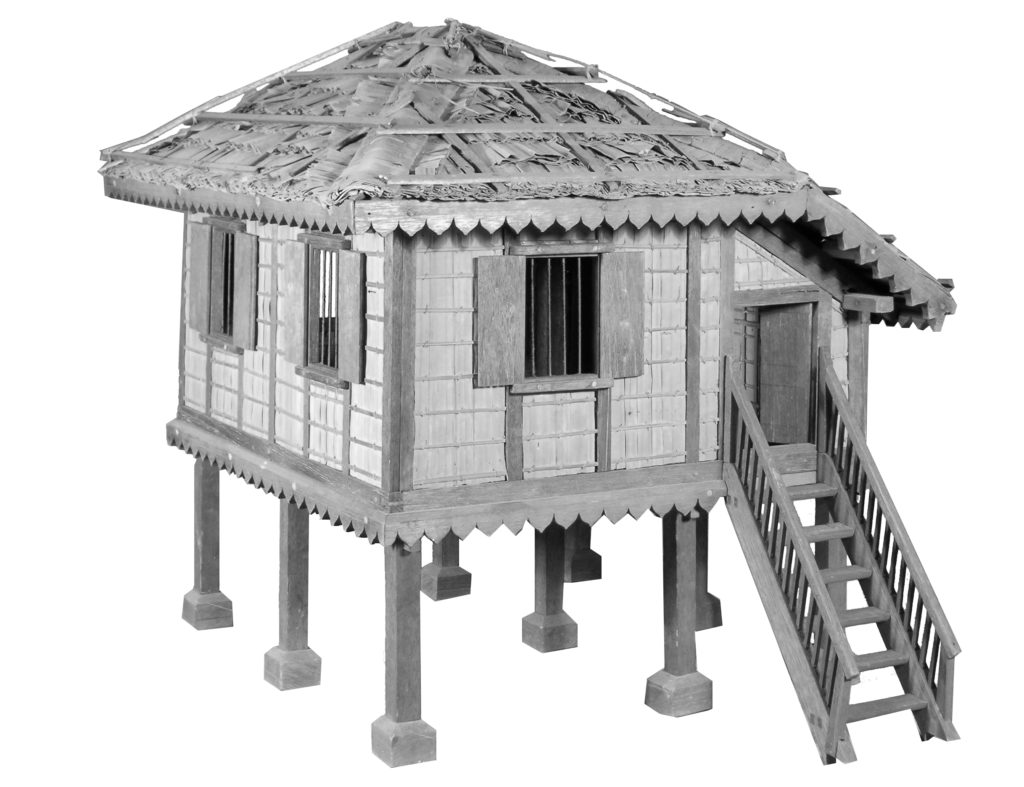
Model of a Malay house
19th-20th century; Malaysia
Wood
This is a faithful model of a house built on stilts, near water or in areas subject to flooding. The roof tiles are of finely split wood planks.
Presented by Rev. F. Payler Woodward, 1914
Reference: L239
Can be found: Heroes and Villains

Model of a South-East Asian canoe
19th to 20th century; probably from Burma Wood
Like the Chinese junk, this model of a canoe is made with care to detail of the oars, planks and construction of the full-size equivalent.
Reference: 4522
Can be found: Heroes and Villains
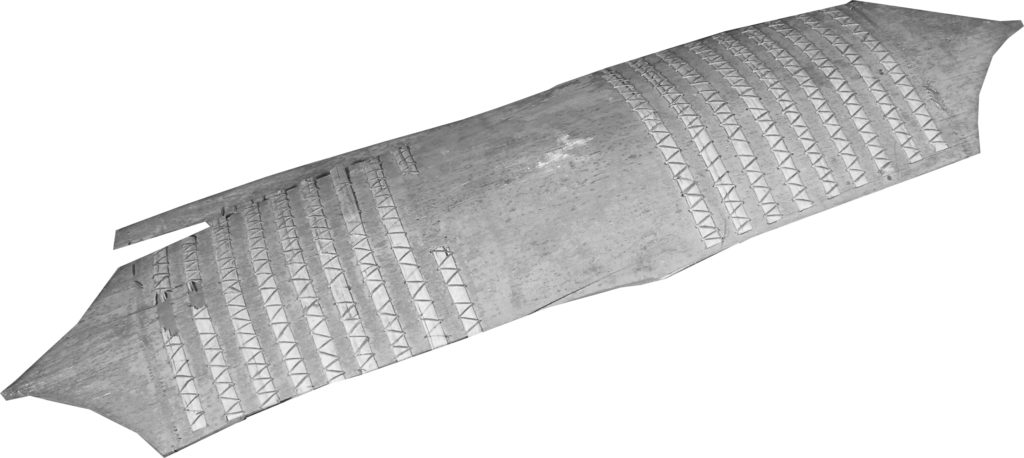
Shield from Borneo
19th to 20th century; Borneo
Wood and cane
A shield carved with an integral handle on the reverse from the same piece of wood. Split cane has been added during construction for strength.
Presented by Lady Mitchell, 1907
Reference: 4843
Can be found: Heroes and Villains

‘Kris’ knives
18th to 19th century; Malaysia
Metal and wood
The Kris is a traditional Malay knife. One or several of these may the Kris knives given to the museum after their seizure from the forces of Tipu Sultan, ruler of Mysore, at Seringapatam, South India, in 1799.
Reference: 1465, 1466
Can be found: Heroes and Villains

